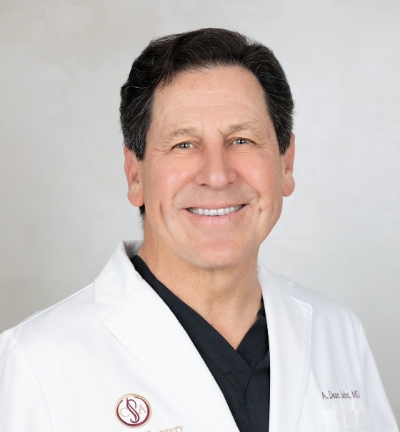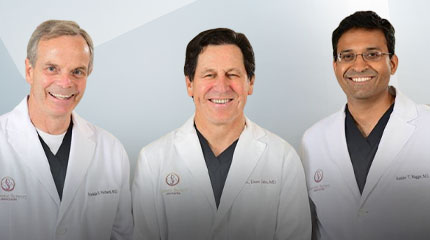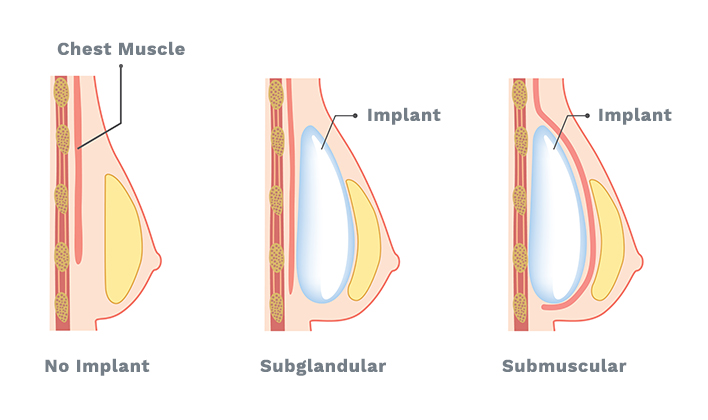Page Contents
- 1. Is Breast Augmentation Right For You?
- 2. Reasons to Choose Breast Augmentation
- 3. Choosing Your Breast Implants
- 4. Breast Implant Types
- 5. Profile
- 6. Shape
- 7. Implant placement
- 8. Incision Placement
- 9. Results And Recovery
- 10. BREAST AUGMENTATION RECOVERY
- 11.
- 12. Schedule a Consultation
- 13. Frequently Asked Question
CONTACT US
TEXTING AVAILABLE! For a text response feel free to text the number provided on your screen after filling out this form.
Breast Augmentation
Conveniently located to serve the areas of Maryland, Virginia and Washington, D.C.
Is Breast Augmentation Right For You?
Breast augmentation (augmentation mammaplasty), procedures, more commonly referred to as a boob job, have remained the most popular cosmetic surgery procedure in America for the past seven years, with a total of 287,085 breast augmentation surgeries performed in 2019 alone. Breast augmentation enhances the symmetry, size, and overall aesthetic appeal of the breasts through the surgical insertion and precise placement of silicone or saline breast implants. By choosing a board-certified and reputable plastic surgeon, together you can go over your options for breast augmentation and decide whether it is right for you and your aesthetic goals.
At Cosmetic Surgery Associates, located in Bethesda, MD, board-certified plastic surgeons Dr. Franklin Richards, M.D., Dr. Dean Jabs, M.D., and Dr. Keshav Magge, M.D. have more than 50 years combined medical experience. For individuals in Washington, DC looking for great care, these doctors have successfully performed countless breast augmentation procedures on patients all over Maryland with a variety of aesthetic goals.
A bigger bust achieved through a breast augmentation procedure can make you feel sexier, confident, and more approachable to others.
Reasons to Choose Breast Augmentation
-
To improve body contour
-
To correct a reduction in breast volume after pregnancy
-
To balance out a difference in breast size
-
Reconstruction following breast surgery
Breast augmentation, or breast enlargement, is a surgical procedure to enhance the size and shape of a woman’s breasts. In some case it can be combined with a breast lift to correct the appearance of sagging breasts. A breast implant is a silicone plastic shell filled with a saltwater (saline) solution, or a gelatinous form of silicone gel, known as memory gel or gummy bear implants. Breast implant surgery is done on an outpatient basis and takes approximately one and a half hours. You will usually feel tired and sore for a few days following the surgery. The swelling in the breasts may take three to five weeks to disappear. You will likely be able to return to work one week after surgery.
Dr. Jabs, Dr. Richards, and Dr. Magge understand that the decision to undergo breast augmentation surgery is a highly personal one, and will work in close collaboration with you to safely bring your breast enhancement goals to fruition.
There is a lot of information one needs to know before undergoing breast augmentation and your surgeon wants you to be completely informed about the procedure. That is why consultations are so important to the breast augmentation process. A breast augmentation consultation provides the best way to get complete answers to specific questions that relate to your individual needs.
Choosing Your Breast Implants
Breast augmentation currently ranks as the third most popular cosmetic surgery procedure in the US after rhinoplasty and eyelid surgery.
As breast implant technology has progressed, patients now have a multitude of implant shapes, textures, profiles, sizes, and materials to choose from. While having a variety of implants to select from is a positive development, the plethora of implant choices may feel overwhelming at first. However, you can rest easy knowing that Dr. Jabs, Dr. Richards, and Dr. Magge will patiently guide you throughout the implant selection process, helping you to choose the most flattering implants for your physique.
FREE GUIDE
Click to download the information provided on our website in a PDF format.
Breast Implant Types
Women in the US have a choice between FDA-approved saline-filled breast implants and silicone gel-filled breast implants. Among silicone gel implants, a new advanced quality called form-stable or gummy bear implants with an ultra-cohesive silicone gel is becoming a fantastic option for many women.
Silicone Implants
Consistently deliver results that look and feel completely natural. Silicone breast implants are less likely to ripple or cause undesirable changes in the natural breast tissue. Silicone implants are offered in moderate through ultra-high profiles and range in pre-determined sizes from 175cc to 800cc. Cosmetic Surgery Associates utilizes the Keller Funnel for insertion. This is a funnel-shaped device that allows the surgeon to insert the silicone implant into the pocket with a “no-touch” technique.
Saline Implants
Saline implants are filled with sterile salt water that is naturally reabsorbed by the body in the case of a leaking implant. Unlike silicone implants, saline implants can be custom-filled to a precise size. The profile of a saline implant is moderate to high, and although this type of implant is easier to remove and requires a smaller incision, saline implants are more prone to rippling over time.
Profile
The profile of a breast implant refers to the distance the implant will project from your body. Lower profile implants create less prominent silhouettes than those with higher profiles. The profile of your implant can also help to change the shape of your breasts.

Shape
Some women want a fuller, more spherical look to their breasts—round implants may be the best option for these patients. Round implants are offered in many different profiles and are currently the most popular silicone implant shape in the United States.
Implant placement
Breast implant placement can significantly impact your breast augmentation results and the overall profile of your upper torso.
Breast implants can be placed submuscularly, which means in a breast pocket created below the pectoral muscle, or subglandularly, which means above the pectoral muscle, right below the breast tissue. The invasiveness of the procedure is similar in both cases, although breast augmentation recovery can be slightly different for the two techniques.
- Submuscular placement — underneath the chest muscle
- Subglandular (a.k.a. submammary) placement — between the chest muscle and breast tissue
Incision Placement
There are two options for incision placement during breast augmentation.
The options for the location of incisions may include an inframammary incision below the breast crease, a periareolar incision along the border of the lower half of the areola or a transaxillary incision in the armpit. The placement of this incision is designed to either help camouflage scar tissue or make implant insertion as quick and easy as possible. In any case, your plastic surgeon aims to make as small of an incision as possible.
- Periareolar (incision encircles the lower half of the areola)
- Inframammary (incision is made just below the curve of the breast)
After helping you to select the optimal implants and choosing the appropriate incision and placement options, Dr. Richards, Dr. Jabs, or Dr. Magge will create a custom-tailored treatment plan designed to safely fulfill your aesthetic goals and complement your physique.
Results And Recovery
The American Society of Plastic Surgeons released the results of a survey in 2008 that revealed that 99% of the respondents would do breast augmentation again. Overall, the respondents gave a satisfaction rating of 9.2 out of 10 following breast augmentation.
The May 2013 issue of Plastic and Reconstructive Surgery published the results of a five-year study, which revealed that 98 percent of the respondents reported that the results of breast augmentation met or exceeded their expectations. Only one percent expressed dissatisfaction with their post-op scarring, while 92 percent reported an improvement in self-esteem.
BREAST AUGMENTATION RECOVERY
You will want to take at least one week off of work for your initial recovery after a breast augmentation. It may take 6-8 weeks for you to fully recover, and during this time you will want to abstain from any strenuous activities or heavy lifting. After your plastic surgery you will be sent home with drainage tubes in each breast. Your surgeon will direct you on how to properly clean, empty and care for your drains before they are removed after about a week. In order to maintain the new shape of your breasts, you will be required to wear a surgical bra at all times. In order to monitor your progress and check for signs of breast implant illness, you will need to attend follow up appointments at your plastic surgeons.
Breast augmentation surgery is generally performed under general anesthesia as an outpatient procedure, and is typically completed in about an hour (if performed in conjunction with a breast lift, the surgery may take longer). After your breast augmentation, you will be released to a friend or family member who will take you home to recover. Your initial results will be visible immediately after your surgery, and will continue to improve over the next 2-4 weeks, as any residual swelling and bruising subside.
Discomfort after breast augmentation surgery is usually mild to moderate. All sutures are dissolvable, so your follow-up appointments will be scheduled at one-week, one-month, and three-month intervals to ensure that you are healing properly.
Schedule a Consultation
If you are seriously considering a surgical procedure to enhance the size, shape, and profile of your breasts, we strongly recommend setting up a consultation with one of our board-certified plastic surgeons to find out if you’re a good candidate for breast augmentation. Our office is only 11 minutes away from Potomac and 10 minutes away from North Bethesda & Rockville. Schedule your consultation appointment today!
Frequently Asked Question
How long do breast implants last?
How does breast augmentation work?
What does breast augmentation mean?
What is capsular contracture, and will it happen after my breast augmentation?
Can breast implants obstruct the results of a mammogram?
Will I lose sensation in my nipples or breasts after my breast augmentation surgery?
Do I need to postpone my breast augmentation surgery until after I am finished having children?
What are the different incision options for my breast augmentation surgery?
Should or could I have a breast lift at the same time as breast augmentation?
How long does it take to recover from breast augmentation surgery?
Can breast implants cause pain years later?
Do breast implants cause autoimmune disease?
Can you breast feed after breast augmentation
Can I move my arms after breast augmentation?
Can breast implants last 30 years?
Do you have to replace breast implants every 10 years?
Does insurance cover breast implants?
How painful is breast augmentation recovery?
Is breast enlargement possible without surgery?
What is the difference between a breast augmentation and breast implants?
Does getting breast implants make you gain weight?
How do I know if my breast implant is leaking?
How do you know if you have capsular contracture?
Is getting a breast augmentation worth it?
What is the most common breast implant size?
Will Cigna cover breast augmentation?
MEET OUR Doctor

FRANKLIN D. RICHARDS, M.D., F.A.C.S.
His surgical skill, trustworthiness, and approachability have earned him a lasting reputation. You can be assured that you will be treated with compassion and integrity.
Read More
A. DEAN JABS, M.D., PH.D., F.A.C.S.
Establishing a personal relationship that allows him to understand his patients’ concerns and desires is a key part of his consultation process.
Read More
Keshav Magge, M.D., F.A.C.S
Dr. Magge’s warm personality puts his patients at ease and he takes the time to answer any and all questions patients may have and strives to understand his patients’ needs.
Read MoreOur Plastic Surgery Associates team includes Dr. Franklin Richards, Dr. A. Dean Jabs, and Dr. Keshav Magge. Each of our plastic surgeons is board-certified, and together they have over 60 years of combined experience. Drs. Richards, Jabs, and Magge are all highly qualified in procedures for the face, breast, and body, and pride themselves in providing excellent results through our state-of-the-art, Quad A certified operating centers








